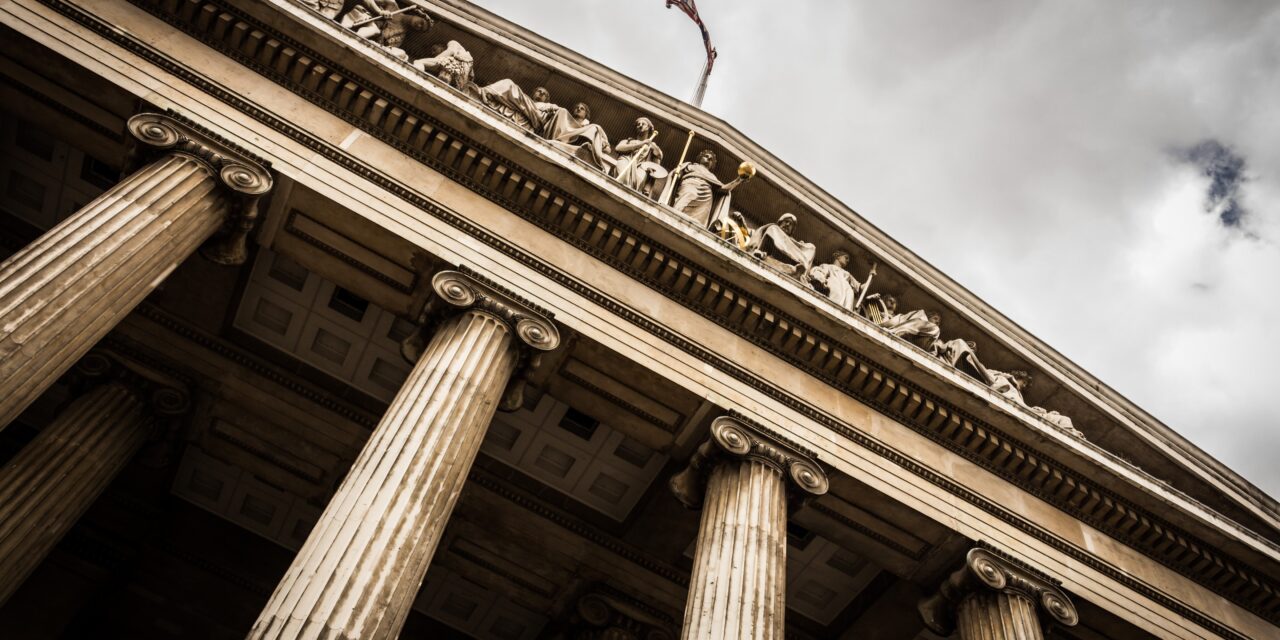INTRODUCTION
On July 1, 2022, the Dutch government informed the Lower House of Parliament that it intends to introduce proposals to amend the Dutch Constitution (Grondwet voor het Koninkrijk der Nederlanden). This has the scope of including the possibility of constitutional review of Acts of Parliament by the courts. The plan boils down to partly lifting the ban on review, currently laid down in article 120 of the Constitution, creating a decentralized system of review that allows all Dutch courts to perform constitutional review of Acts of Parliament. In the first part of this article, it will be explained what article 120 of the Dutch Constitution is. Further, in part II two different constitutional systems will be analyzed: Norway and Romania. Norway does not have a special Constitutional Court and Romania does. Lastly, Part III will explain what these constitutional systems have in common and why does Netherlands need a constitutional rereview court. Hence, the main question here is: Why are these countries relevant to this specific problem?
PART I
CONTEXT AND MEANING OF ARTICLE 120
What is Constitutional review?
Constitutional review means the power of the courts to examine whether an act is in conformity with the Constitution. For some of the countries, among which is Netherland too, this is not possible, especially because of the prohibition of the article 120 from the Dutch Constitution. This article is based on the idea that parliament should tell the citizens what to do.
Historical context
Since 1848, the implementation of article 120 of the Dutch Constitution did not give the possibility to courts to determine whether an Act of the parliament is contrary to the Constitution or not. Johan Thorbecke, the former minister of the Netherlands in the 19th century, also known for having a leading position in the commission that drafted the revision of the Dutch Constitution in 1848, believed that a review prohibition “would exclude the Constitution from the usual conflict rules” and it will give to the legislator the position of the “highest interpreter of the Constitution”. What became more controversial was that, since 1953-56, the court could have reviewed Acts of parliament against treaties, but not against the Constitution. Moreover, the
Court had and still has the power to review other subordinate level legislation against the Constitution.[1]
Therefore, on 1 July 2022, through its ministers for the Interior and Legal Protection, the Dutch Government sent a letter to the parliament concerning its intention to proceed with the introduction of constitutional review of statues by the court. This letter intends to prioritize the citizens’ need to enjoy a better legal protection from the government, to become much more aware of what their supreme law can do, making a fuller use of their rights and thus creating a much more strengthened rule of law. In order to achieve their scope, on one hand, the Government proposes a decentralized system, giving the power to test the Acts of parliament against the Constitution to all of the Dutch courts. On the other hand, only the civil and political rights and liberties would be available as standards for constitutional review, to avoid any kind of implication of the courts in political cases. However, the exclusion of social rights from the list of constitutional review seems an intricate problem, which might create an issue for courts to determine if “sufficient means have been allocated for their realization.”.[2]
For the provisions which do not qualify for constitutional review, pre-enactment scrutiny will continue to be needed. Meaning, as Maartje De Visser mentioned in her article, a “composite constitutional guardianship”. Multiple institutions will need to cooperate to examine whether the draft of a bill is in accordance with the actual constitution. Therefore, in the Netherlands the Council of State shall be consulted regarding the bills, draft orders in council, the proposals for the approval of treaties and the government should officially respond to the Council of State’s opinion in the explanatory memorandum. The existence of a such composite constitutional guardianship creates questions regarding an appropriate design of the pre-enactment scrutiny: whether the public should be more involved or, especially for Netherlands, an important matter would be whether a dedicated parliamentary committee is needed. However, such a committee does not exist yet in Netherlands, compared to other countries as Sweden Finland and the United Kingdom. [3]There seem to not be high hopes for it to happen as a proposal to that effect was already presented to the Dutch lower house in 2017, but it did not have a significant effect. Maartje De Visser concludes her article with the hopes that the Dutch political institutions will take a closer look to a possible “institutional or procedural innovations” that will make improvements to the engagement of the Dutch authorities with the constitution.[4]
PART II
LEGAL SYSTEM OF NORWAY
The first country chosen in order to examine the actual issue is Norway. As opposed to the Kelsian constitutional review model which many European countries, but not all, function upon, the United States created its own with the Marbury case from 1803. The U.S. Supreme Court granted to itself and to the lower Courts created by the Congress the power of judicial review. Ergo, legislation, executive and administrative actions could be declared unconstitutional.[5] From Europe, Norway is one of the countries which functions on this system. Article 1 of the Constitution of Norway states that” The Kingdom of Norway is a free, independent, indivisible and inalienable Realm.” Its form of government is a limited and hereditary monarchy and the executive power is vested in the King or in the Queen.6 Regarding its form of government, it is a limited and hereditary monarchy.[6] Although Norway Constitution has vague information concerning the judicial review, the jurisdiction from the Grev
WedelJarlsberg v. Marinedepartementet case from 1866, was a “breakthrough” for Norway, as Justice dr. juris Arnfinn Bårdsen stated in The Nordic Supreme Courts as Constitutional Courts; main features as seen from the Norwegian perspective. Without any reference in the Norway Constitution, the Norwegian Supreme Court decided, for the first time, that any laws in conflict with the constitution will not be applied. This led to another significant case Norsk Retstidende 401, which put the problem of reviewing the constitutionality of the acts of Parliament.[7] Further, this lead also to the later article 89 of the Constitution of Norway. This states that the courts have “In matters before the courts, the courts have the right and duty to review whether laws and other decisions made by the State authorities are contrary to the Constitution.”9 It created a decentralized judicial system, with ex-post review, to which any Court can have an opinion regarding review of the Constitution, but the Supreme Court pronounces the final judgement. [8]
However, if a legislative norm is found unconstitutional, the provision cannot be declared by the Court “null and void”, therefore, it will be “set aside”. [9] But, the Parliament will always respect the Court’s verdict and will proceed in accordance with its decision. Ergo, in theory the decision is not binding, but practice it has a binding effect as the Parliament always accepts it. [10]
Strong and weak points of the constitutional system of Norway
From the perspective of separation of powers, the decentralized of judicial review of Norway system is strong, even that the decisions of the Supreme Court are not binding. This can be observed even from the words “right and duty” from the Constitution. These does not create obligations for the Court. Eventually, the Parliament is the body that decides to make the necessary changes to the laws.[11] But, the Parliament always accepts the Court decision, which creates a equilibrium between the powers. From this view, the constitutionality review might seem that it loses all its power, but instead it creates a not just a powerful judicial system, but also a democratic one.
Moreover, this imbalance between the powers is benefic for Norway’s democracy as “each power is providing the necessary check on the other powers and thus contributing to the maintenance of a proper equilibrium”.[12]
The protection of human rights is an important element in the Norwegian constitution. As stated by Anine Kierulf in her article, with the changes made by the Norwegian parliament regarding the amendment of additional human rights, the parliament confirmed its “political broad support for human rights as effective made by judicial review, but also the constitutional nature of Norwegian democracy”.[13]This demonstrates not only that judicial review is well used to protect the human rights, but also that the judicial review of Norway has a democratic character.
LEGAL SYSTEM OF ROMANIA
Romania is a unitary state, independent and indivisible, based on the Romanian Constitution,.[14] Its form of state is the Republic.[15] Regarding its judicial system, it has a Constitutional Court, ruled on the Kelsian model, which is “the guarantor of the supremacy of the Constitution.”.[16] It is composed of 9 judges, appointed for 9 years.[17] Three judges are appointed by the Chamber of Deputies, three by Senate and Three by the President of Romania.20 Romania has a concentrated system, combined with the power of abrogation of the statute passed by the Parliament.[18] It has an abstract review system, and the laws can be reviewed only before they are promulgated – ex ante. Concerning the review, article 146 (a) of the Constitution of Romania, states that it can pronounce on the constitutionality to pronounce on the constitutionality of laws before their promulgation upon request of the President of Romania, one of the presidents of the two Chambers, the Government, the High Court of Cassation and Justice, the People’s Attorney, at least 50 deputies or 25 senators, as well as on its own initiative [ex officio] on proposals for the amendment of the Constitution.[19] The court’s decisions are binding. Under article 147, section 2, if any law act of parliament is found unconstitutional, the Parliament is obligated to reconsider the provision and to bring them in accordance with the decision of the Constitutional Court.26
Strong and weak points of the Constitutional system of Romania
From the perspective of separation of powers, the judicial system is strong. The Court’s decision is binding upon the unconstitutionality of the acts of parliament. The Parliament is obligated to revise the law and to modify it in order to be in accordance with the Constitution. There is a clear separation between the legislative branch and the judiciary branch.
On the one hand, the constitutional system of Romania does protect the human rights. This is demonstrated with Decision no. 233/2021, with regards to the mentioning the sentence along with the reasoning in a trial. The decision creates additional rights for an individual, as this decision established that a person who is convicted will not go to prison if the reasons are absent or not sufficiently argued. The acts of the Parliament found unconstitutional are article 400 (1), article 405 (3) and article 406, paragraphs (1) and (2) from the Criminal Procedure Code, emitted by the Romanian Parliament. Article 400 (1) concerned the time in which the result of the deliberation, in a judicial process, must be recorded: “the result of the deliberation shall be recorded in a minute, which must have the content provided for the disposition of the decision”.[20] Article 405 (3) was related to the procedure of pronouncing the decision.[21] Article 406 referred to the procedure of drafting and signing the decision, namely the first paragraph mentioned that in 30 days, the judgment must be drawn up.[22] The second provision specified about who has to drawn up the judgment and also who has to sign it. 30 The Constitutional Court admitted the exception of unconstitutionality of the mentioned articles and demonstrated that the Romanian system protect the human rights.[23]
On the other hand, access to the Constitutional Court is limited, meaning that individuals themselves cannot make much of a use of the constitutional court. The individuals cannot directly notify the court. Not even for the human right matters, as the judicial institution for constitutional review functions in Germany. Only the institutions and political figures, mentioned in article 146 of the constitution of Romania, are allowed.
Lastly, the Romanian judiciary system has some issues regarding democracy. In theory, it has a proper separation of powers, human rights are protected to a certain level, but the system itself does not offer the actual tools of democracy to the citizens. Democracy means that citizens can choose how they want to have their system, in which conditions, as well as they choose their president. In this judicial system, the organs who choose for the citizens are the Parliament and the Constitutional Court. They could make decisions which the citizens do not agree with.
Norway and Romania – Black and white
All in all, the Kelsian judiciary system of Romania differs from the constitutional system of Norway does not. The Romanian judiciary review, with regards to the review of the acts of Parliament, seems to have a strong position, from the separation of power perspective. In theory, the powers are clearly divided, whilst in Norway not, but are much more stronger. The constitutional system from Norway, gives much more importance to the protection of human rights than Romania does. From the perspective of democracy, Romania lacks to demonstrate that the judicial power has democracy as a strong basis. Even that Norway’s system does not have such a defined separation of power, the imbalances between the powers create a stability between the legislative and judiciary power, which forms a relationship of democracy among them in order to function. I have chosen to study the problem of a decentralized system in Netherlands through these countries for the reason that these are the opposite from another from many aspects: economy, politics, judicial branch and many others. By analyzing these non-legal aspects, it can be seen if the applicability of a Constitutional Court is possible in such a country as Netherlands. Is the economic situation in Netherlands similar to the one in Norway? Would a Constitutional Court be effective in Netherlands as it is in Romania?
PART III
REASONS TO CREATE A CONSTITUTIONAL COURT FOR NETHERLANDS
After analyzing these two different systems, it is imperative to establish if a decentralized system of review would be a right option for Netherland.
From the perspective of the form of its organization of the state, Netherlands is a constitutional monarchy, with a parliamentary system. Its system resembles with the one from Norway. Creating a Constitutional Court would not alter its organization as a state. The judicial review, especially the constitutional review from Norway, protects human rights, but the intriguing problem is its decentralized system. There is not a Constitutional Court, all courts can have an opinion regarding this, but the Supreme Court makes the final decision. However, even that the decision is not technically binding, practically the Parliament always respect it.
Consequently, this emphasizes that, in order to exist a proper functionality of the country, there needs to exist not just a clear separation of powers, but also a strong system. For instance, in Romania the powers are clearly divided, but its function as a state impedes the powers to have a good judicial mechanism. In order to achieve a proper functionality, the citizens can be much more involved in the judicial system of the country. As citizens, they know much better what they need than parliament does. As this system was created for the proper functionality of the country, for the citizens, they should be allowed to have access to a Constitutional Court.
Moreover, the judicial review might be “emerged in response to a nation’s need for an umpire to resolve federalism or separation of powers disputes.”[24] As the Netherlands’ system is based on the idea that the Parliament should ‘dictate’ the citizens what to do, the justification of the letter can be considered that the Dutch citizens need constitutional system of review, not just a law from the “basic law”, section 94, which deals more with problems regarding human rights.[25]
Beside this, a constitutional court is the easiest way to resolve any matter regarding the constitutionality of the Acts of Parliament or other laws.[26] A Constitutional Court will not deal only with matters of human rights, but any kind of problems, treaties, provisions, laws, acts of parliament which are not in accordance with the purpose of the Constitution.
CONCLUSION
Overall, the creation of a Constitutional Court would seem a proper idea. A Constitutional Court will respond to the need of their citizens to live in a country where the powers are separated. Moreover, the citizens will contribute to the evolution of the judiciary branch of the country and would create an equal system of not just the constitutional system, but of the entire separation of power. Regarding the intended approach, both constitutionals’ systems have strong and weak points, but a concentrated system would be the best one. A decentralized system will not always guarantee the individual character of the judicial system. Even from the perspective of the organization of the state, a decentralized system would fit better for Netherlands, a concentrated system has higher chances to assure a good separation of power. The best of both worlds would be a concentrated system, as it is in Romania, in which the Constitutional Court will assess any kind of provisions, in this regard especially the acts of Parliament, with a strong and individual judiciary system as it is in Norway and no limitations of access of the citizens to the Court.
[1] State Commission on the parliamentary system in the Netherlands, Democracy and the Rule of Law in Equilibrium 2018.
[2] De Visser M., “Will the Netherlands Finally Embrace Constitutional Adjudication?”
[3] ibid.
[4] ibid.
[5] Urofsky M.I., “Marbury v. Madison” (Encyclopedia Britannica)
[6] ibid article 3.
[7] Russdal R., “The Relation Between the Judiciary and the Legislative and Executive Branches of Government in Norway” ” North Dakota Law Review: Vol. 57 : No. 4 , art. 1. 9 Constitution of Norway [1814] article 89.
[8] Justice dr. juris Arnfinn Bårdsen, the Supreme Court of Norway “The Nordic Supreme Courts as Constitutional Courts; main features as seen from the Norwegian perspective”, Joint seminar between the Constitutional Court of Austria and the Supreme Court of Norway Vienna the 29-30th of October 2015.
[9] Nguyên D.I,: “New Trends in Scandinavian Constitutional Review” < https://scandinavianlaw.se/pdf/61-1.pdf> accessed December 13, 2022.
[10] Smith, E. (2019). Ordinary judges as constitutional judges: Norway. (Rechtspolitisches Forum, 80). Trier: Institut für Rechtspolitik an der Universität Trier.
[11] Justice dr. juris Arnfinn Bårdsen, the Supreme Court of Norway “The Nordic Supreme Courts as Constitutional Courts; main features as seen from the Norwegian perspective”, Joint seminar between the Constitutional Court of Austria and the Supreme Court of Norway Vienna the 29-30th of October 2015.
[12] CCJE Opinion No. 18(2015), On the position of the judiciary and its relation with the other powers of state in a modern democracy, para 9.
[13] Kierulf A., “Norway: Human Rights and Judicial Review Constitutionalized”
[14] Constitution of Romania [1991] art. 1.
[15] Ibid art 1.
[16] ibid art. 142(1).
[17] ibid art. 142(2). 20 ibid art. 142(3).
[18] European Commission for democracy through law, Constitutional Courts: Models of operation as Regards Federal States systems “Workshop on the Relationship of Central Constitutional Courts and Constitutional Courts of Federated Entities” [1997] CDL-JU (97) 23.
[19] Constitution of Romania [1991] art. 146 (a).
[20] The Penal Procedure Code [2014] art. 401 (1).
[21] ibid 405 (3).
[22] ibid 406 (1). 30 ibid 406 (2).
[23] Decision no. 233/2021, in the Official Monitor of Romania: 508/2021.
[24] Calabresi SG and Owens J, “The Origins of Judicial Review” (SSRN February 8, 2014).
[25] Knowledge clip 3, theme 5, Judicial review and Constitutional review.
[26] International IDEA “The Fundamentals of Constitutional Courts” < dea.int/sites/default/files/publications/thefundamentals-of-constitutional-courts.pdf>.








